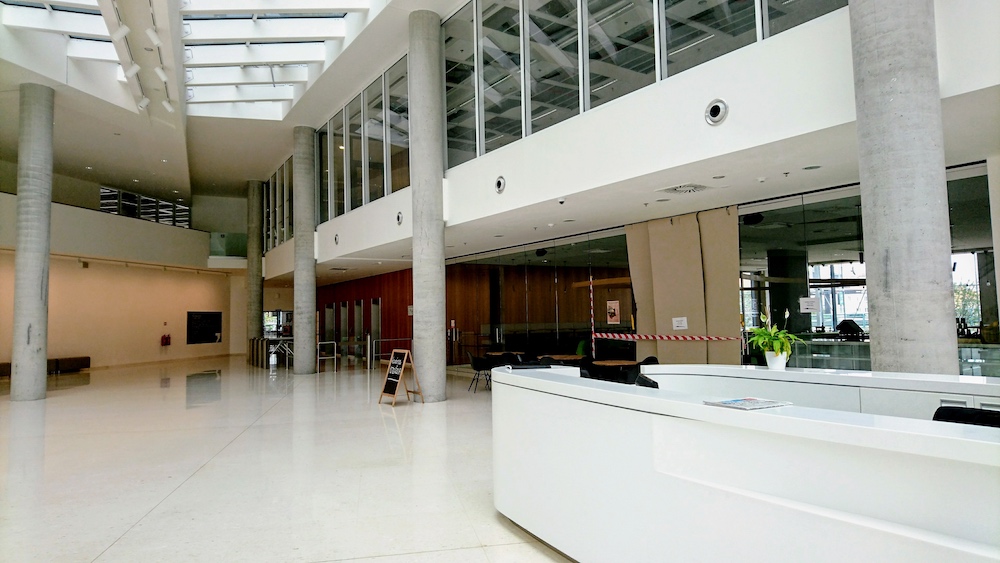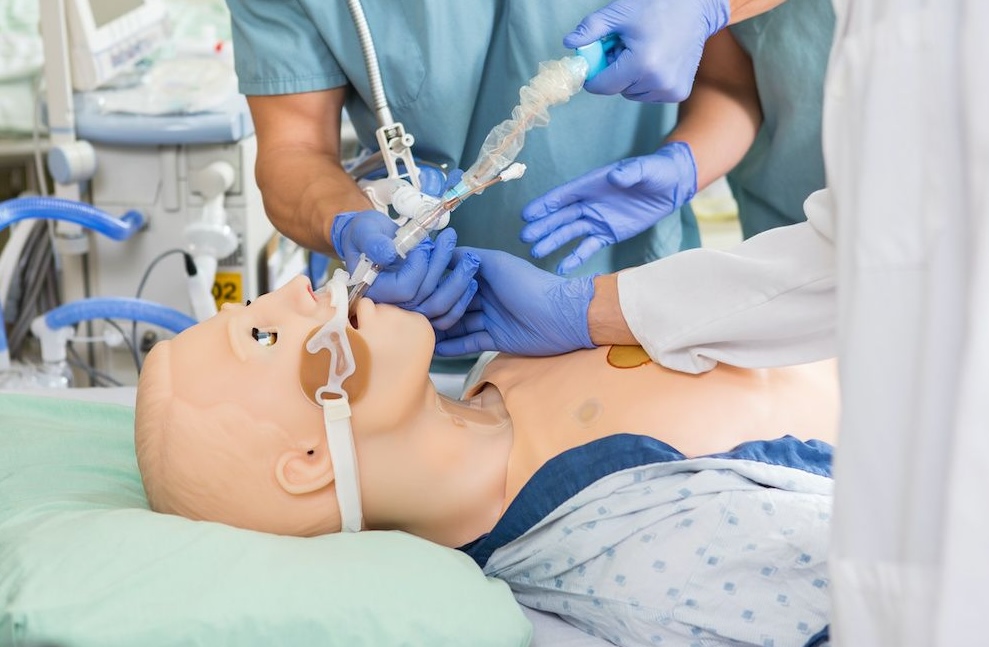Healthcare simulation centers are constantly being unveiled across the United States and globally. As a dedicated area within a clinical education building, medical center, or training facility which is devoted to healthcare simulation, these spaces have become integral to a learner’s medical education. From design and operations to groundbreaking construction, several U.S.-based universities have recently announced clinical simulation center updates. This HealthySimulation.com article shares these updates and explains why they are relevant to their respective university’s education and training needs.
Saint Mary’s Unveils State-of-the-Art Center for Integrative Healthcare Education
In an article published by The Observer, the news outlet shares that after months of renovation, Saint Mary’s College invited the community to tour the new Center for Integrative Healthcare Education (CIHE) housed in Regina Hall in early October 2021. The article further shared that the state-of-the-art facilities will provide [learners] with incomparable tools, education and experience to make an immediate impact and to be leaders in contemporary healthcare.
“Today, we have a facility that provides students with an interdisciplinary and inter-professional education with access to multidisciplinary simulation labs, classroom space and research opportunities,” she said, according to the article. “The first to move into the building was the Department of Nursing Science. Later, as the Center continues to expand, all of Saint Mary’s health science and behavioral sciences will be housed here, including autism studies, social work and gerontology, and speech-language pathology.”
Illinois State Plans Two-Story Addition to Nursing Simulation Lab
According to an article published by Illinois State University, the Mennonite College of Nursing’s Simulation Lab will triple in size under an $18 million project that will dramatically increase the college’s clinical training facilities and allow the college to enroll more learners. The University will demolish a vacant house and apartment building immediately west of the current lab, which opened in 2011 just north of the Bone Student Center parking lot, and builds a new two-story facility. The current lab and the new building would be connected by a joint entryway and comprise a combined 30,000 square feet. The University is in the process of hiring an architectural firm for the project, which is estimated to be complete within about three years.
Purdue University Global Partnering with CHI Health St. Elizabeth on Simulation Center
According to an article published by Purdue University, the Global School of Nursing has partnered with CHI Health St. Elizabeth to create a “more efficient and innovative learning model that meets the needs of Purdue Global students, CHI staff and the community.” The joint venture will include a state-of-the-art simulation center at CHI Health St. Elizabeth Hospital in Lincoln, Nebraska.
Additionally, the simulation center will use a family of high-fidelity, Gaumard brand manikins — life-sized anatomical human models — that include an infant, child, birthing mother, and adult, according to the article. The university also reports that the space will consist of two large high-fidelity simulation suites staged to mock hospital rooms with audio/video capabilities, a master control room, three conference rooms to hold debriefings, several skills lab practice rooms, break areas, nurses’ station, central supply area, medication preparation space, offices, and storage space.
TCNJ’s Nursing Simulation Center Adds Oculus Goggles Paired with VR Software
According to an article published by the College of New Jersey, the school’s nursing simulation lab recently showcased the addition of VR goggles and AI manikins. Oculus goggles paired with virtual reality software that students can now be used to fully immerse learners in realistic patient care situations like catheter or IV insertion.
“Students can talk and physically do things to the patient as they would in real life,” Simulation Lab Facilitator Chelsea Lebo said, according to the article. “Some of the scenarios are multiuser so more than one student can be ‘in’ the scenario at a time and they can work together.”
La Roche University Dedicates Clinical Simulation Center in Honor of Distinguished Alumnus
According to an article published by La Roche University, the school’s new clinical simulation center has been dedicated in honor of Anthony J. Battaglia ’95, M.S., RN. Battaglia contributed the largest outright gift from a La Roche graduate in the institution’s history to erect the Anthony J. Battaglia Clinical Simulation Center, which opened in April 2020. The Center allows students, including those in the Entry Level Master of Science in Nursing (ELMSN) program, to study their craft.
The Anthony J. Battaglia Clinical Simulation Center provides learners with a variety of opportunities to practice assessment skills and critical thinking before dealing with live patients. Low- to mid-fidelity simulators are used to teach vital signs assessments, wound care, and more. High-fidelity simulators are programed so that learners can use higher-order thinking to respond to more complex conditions related to neurological, respiratory, and cardiac problems.
Boston University Includes New SImulation Learning Center in Dental School Building Upgrades
According to an article published by Boston University Today, Boston University’s Henry M. Goldman School of Dental Medicine recently celebrated the building’s redesign and expansion. The SDM expansion included the construction of two additions—a seven-story addition on the west side and a two-story addition on the north side. Now, a new state-of-the-art Simulation Learning Center (SLC), where as many as 117 students can practice using dental instruments on manikins, is housed in the same dental medicine building, a point faculty and learners cite as a major upgrade.
More About Clinical Simulation Centers
Building a simulation center involves a huge amount of planning. All the stakeholders come together and have input into the construction. The technical logistics and equipment are complex. Some simulation centers have simulation laboratories that exactly mimic an operating room, a delivery room, an emergency department, a medical-surgical floor room, an ICU room etc. Experts from medical specialties and educators need to have input into the planning phase of the construction. Once the construction is complete, funds will be needed for ongoing maintenance, repair, and replacement of equipment as it ages.
In many medical simulation training centers, the observation room serves as the debriefing room. In addition, there is usually a separate control room where the simulation technician sits. This is the person dubbed a Simulation Technology Specialist who remotely controls the manikin, such as the Laerdal SimMan3G, and who is responsible for setting up all the equipment and applying any special effects medical makeup called Moulage. In addition, a clinical educator will be present in the control room. The educator, who often speaks the voice of the manikin controls the physiological and spoken responses of the manikin usually in response to the interventions of the learners within the sim lab. The above setup would be typical for a small simulation center.
Now imagine a large-scale healthcare simulation center with multiple sim labs, control rooms, and debriefing. Add in patient examination rooms with standardized patients, rooms full of task trainers, banks of computers, and conference facilities, and the simulation center could easily occupy thousands of square feet. These simulation centers cost millions of dollars to build and operate and are only found in large medical centers and universities. Funding for simulation centers comes from donations, grants, and university/medical center funding. Some simulation centers generate funds by renting out their spaces to other institutions or offering courses for which they charge a fee.








